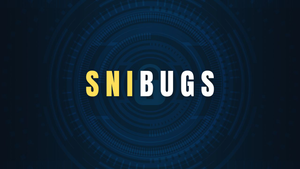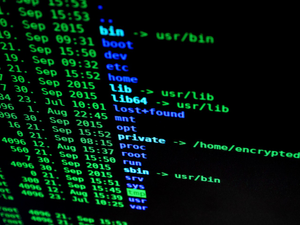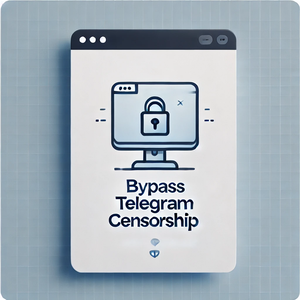
SNI Bugs: CVEs & Mitigations
Server Name Indication (SNI) is a critical extension of the TLS protocol that has revolutionized secure communications on the Internet. However, as with many sophisticated security protocols, SNI is not immune to vulnerabilities. Known as SNI bugs, these issues can expose systems to various exploits if left unpatched or misconfigured. In this comprehensive guide, we explore every facet of SNI bugs—from technical details and exploitation methods to mitigation strategies and concrete examples featuring real CVE references.
Table of Contents
- Introduction to SNI
- Understanding SNI Bugs
- Historical Perspective and Notable Examples
- Exploitation Techniques and Attack Vectors
- Detailed Examples of SNI Vulnerabilities (with Real CVEs)
- Mitigation and Fixes
- Best Practices for System Administrators and Researchers
- Future Directions and Research Opportunities
- Conclusion
Introduction to SNI
Server Name Indication (SNI) is an extension to the Transport Layer Security (TLS) protocol that allows a client to specify the hostname it is connecting to at the beginning of the TLS handshake. This capability is essential in today’s digital landscape because it permits a single IP address to host multiple SSL certificates, which is especially critical in multi-tenant environments and cloud services.
While SNI has enabled tremendous flexibility and resource efficiency in web hosting, its complexity has sometimes led to implementation oversights that attackers may exploit.
Understanding SNI Bugs
What Are SNI Bugs?
SNI bugs refer to vulnerabilities and implementation flaws specifically associated with the handling of the SNI extension in TLS. These vulnerabilities can be categorized as follows:
- Parsing Errors: Faults in processing the SNI field during the TLS handshake can lead to memory mismanagement.
- Validation Issues: Inadequate checks on the hostname provided can cause misrouting of traffic or allow attackers to spoof identities.
- Buffer Overflows: Poor handling of SNI data may lead to classic buffer overflow vulnerabilities, potentially resulting in remote code execution or denial-of-service (DoS) conditions.
Why Are SNI Bugs Important?
The integrity of SNI is critical because:
- Secure Communications Depend on It: A successful SNI attack can allow interception or manipulation of encrypted data.
- Multi-Tenant Impact: A vulnerability in SNI handling can compromise several hosted domains on a single IP address.
- Expanded Attack Surface: Given the widespread adoption of SNI, even minor bugs can be exploited at scale.
Historical Perspective and Notable Examples
Since its introduction, SNI has been implemented in numerous SSL/TLS libraries (such as OpenSSL, NSS, and others). Over time, several vulnerabilities have been discovered that highlight the potential risks:
- Early Implementation Flaws: Some early versions of TLS libraries did not adequately validate SNI input, leading to potential crashes and exploits.
- Protocol Misinterpretation: Certain systems stripped or misinterpreted SNI data, allowing attackers to trigger fallback behaviors exploitable for impersonation.
- Documented CVEs: Multiple CVEs have highlighted SNI-related bugs, serving as a critical reminder that even widely used protocols need continuous security review.
Exploitation Techniques and Attack Vectors
How Attackers Exploit SNI Vulnerabilities
Attackers can target SNI bugs using a variety of techniques:
Man-in-the-Middle (MitM) Attacks:
Exploiting misconfigurations in SNI handling can allow attackers to intercept and modify data exchanged during the TLS handshake.Certificate Mismatch and Redirection:
If the SNI field is improperly validated, an attacker may force a server to serve an incorrect certificate, enabling impersonation attacks.Buffer Overflow Exploits:
A poorly handled SNI field might trigger a buffer overflow, leading to remote code execution or system crashes.Protocol Downgrade Attacks:
Attackers might force the use of weaker security protocols if the SNI extension is not strictly enforced, exposing the system to additional vulnerabilities.
Detailed Examples of SNI Vulnerabilities
Example 1: OpenSSL SNI Parsing Vulnerability (CVE-2020-1967)
Overview:
OpenSSL 1.1.1, one of the most widely used TLS libraries, had a vulnerability (CVE-2020-1967) related to the handling of the SNI extension. In this vulnerability, a malformed SNI input could lead to a parsing error, potentially triggering a buffer overflow.
Impact:
- Denial of Service (DoS): Maliciously crafted SNI data could crash the server.
- Remote Code Execution: In the worst-case scenario, attackers might exploit the overflow to execute arbitrary code.
Mitigation:
- Update OpenSSL: Ensure that your OpenSSL version is patched beyond CVE-2020-1967.
- Rigorous Input Validation: Implement strict checks on SNI data to ensure it conforms to expected formats.
Example 2: NSS SNI Vulnerability (CVE-2018-0732)
Overview:
The Network Security Services (NSS) library, used by various browsers and applications, was found to have an SNI vulnerability documented as CVE-2018-0732. This flaw involved the improper handling of SNI data, which could result in memory corruption.
Impact:
- Potential for Code Execution: Memory corruption issues can be leveraged by attackers to execute arbitrary code.
- Stability Issues: Even if remote code execution isn’t achieved, the vulnerability could still lead to crashes and service interruptions.
Mitigation:
- Apply NSS Updates: Use the latest version of NSS that addresses this vulnerability.
- Monitor Security Advisories: Keep an eye on NSS security bulletins for emerging threats.
Example 3: Certificate Mismatch in Web Servers Using SNI
Scenario:
A misconfigured web server (e.g., NGINX or Apache) might incorrectly match the SNI field to a virtual host, serving an incorrect SSL certificate. Although not assigned a CVE in some cases, this type of misconfiguration has been observed in the wild and can lead to significant security concerns.
Impact:
- Increased Risk of MitM Attacks: If a client receives the wrong certificate, it could be tricked into trusting an impostor server.
- Loss of Data Integrity: This mismatch can compromise the confidentiality of user data.
Mitigation:
- Strict Configuration Enforcement: Configure your server to rigorously verify the SNI field against the expected hostnames.
- Regular Audits: Perform configuration audits to ensure no misrouted certificates are in use.
Mitigation and Fixes
Immediate Fixes
Software Updates and Patches:
Keeping your TLS libraries and web server software up-to-date is the most effective defense. Vendors typically release patches once vulnerabilities (such as CVE-2020-1967 or CVE-2018-0732) are identified.Enhanced Input Validation:
Developers should enforce robust validation on SNI data—checking string length, permitted characters, and proper termination—to minimize the risk of overflow or misinterpretation.Configuration Best Practices:
- Strict SNI Enforcement: Configure your servers to validate the SNI field against known and trusted domain names.
- Disable Protocol Fallback: Limit the ability to downgrade to less secure protocols if SNI validation fails.
- Isolate Virtual Hosts: Separate critical services to reduce the impact of misconfigurations.
Long-Term Strategies
Regular Security Audits:
Frequent audits of TLS and SNI handling practices can identify vulnerabilities before they become exploitable.Adopt New Security Standards:
Stay informed about emerging protocols (e.g., TLS 1.3) that incorporate improved handling of extensions like SNI.Advanced Security Tools:
Utilize automated vulnerability scanners and penetration testing frameworks that focus on TLS and SNI-related vulnerabilities.Collaboration with Researchers:
Participate in vulnerability disclosure programs and security research communities to stay ahead of potential threats.
Best Practices for System Administrators and Researchers
For System Administrators
Monitor Vendor Releases:
Regularly review security advisories and patch releases from your TLS library and web server vendors.Deploy Intrusion Detection Systems (IDS):
Implement IDS to monitor TLS handshake anomalies that could signal an exploitation attempt.Establish Incident Response Plans:
Ensure you have robust backup and incident response procedures in place.
For Researchers
Engage in Protocol Analysis:
Use fuzzing tools, protocol analyzers, and other methodologies to explore potential SNI bugs.Publish and Share Findings:
Sharing insights and research findings through reputable cybersecurity channels helps improve the overall security posture of widely used protocols.Contribute to Open-Source Security:
Consider contributing code reviews and patches to open-source projects implementing TLS and SNI.
Future Directions and Research Opportunities
As SNI continues to be a fundamental part of secure communications, ongoing research and development are essential:
Advanced Parsing Techniques:
Explore the use of machine learning or heuristic-based methods for more robust SNI parsing and validation.Integration with Next-Gen Protocols:
Study the interplay between SNI and evolving protocols such as TLS 1.3, ensuring that newer implementations address legacy vulnerabilities.Enhanced Monitoring Solutions:
Develop real-time monitoring tools using big data and AI to detect abnormal SNI usage patterns that may signal exploitation.Formal Verification:
Investigate formal methods to mathematically verify the correctness and security of SNI handling in TLS libraries.User Awareness and Education:
Continue efforts to educate IT professionals and end users about the importance of secure TLS configurations and regular updates.
Conclusion
SNI bugs represent a significant challenge in maintaining secure TLS communications. From parsing errors and validation issues to high-profile vulnerabilities like CVE-2020-1967 (OpenSSL) and CVE-2018-0732 (NSS), the impact of these flaws can be far-reaching—affecting everything from web servers and mobile applications to entire hosting infrastructures.
By staying informed through regular updates, rigorous security practices, and proactive research, organizations and researchers can significantly mitigate the risks associated with SNI vulnerabilities. The ongoing collaboration between industry professionals and the cybersecurity research community remains vital to ensuring that our digital communications remain secure.
Stay tuned for further insights and updates on emerging vulnerabilities and mitigation techniques. Your proactive security measures today pave the way for a safer digital tomorrow.















Comments